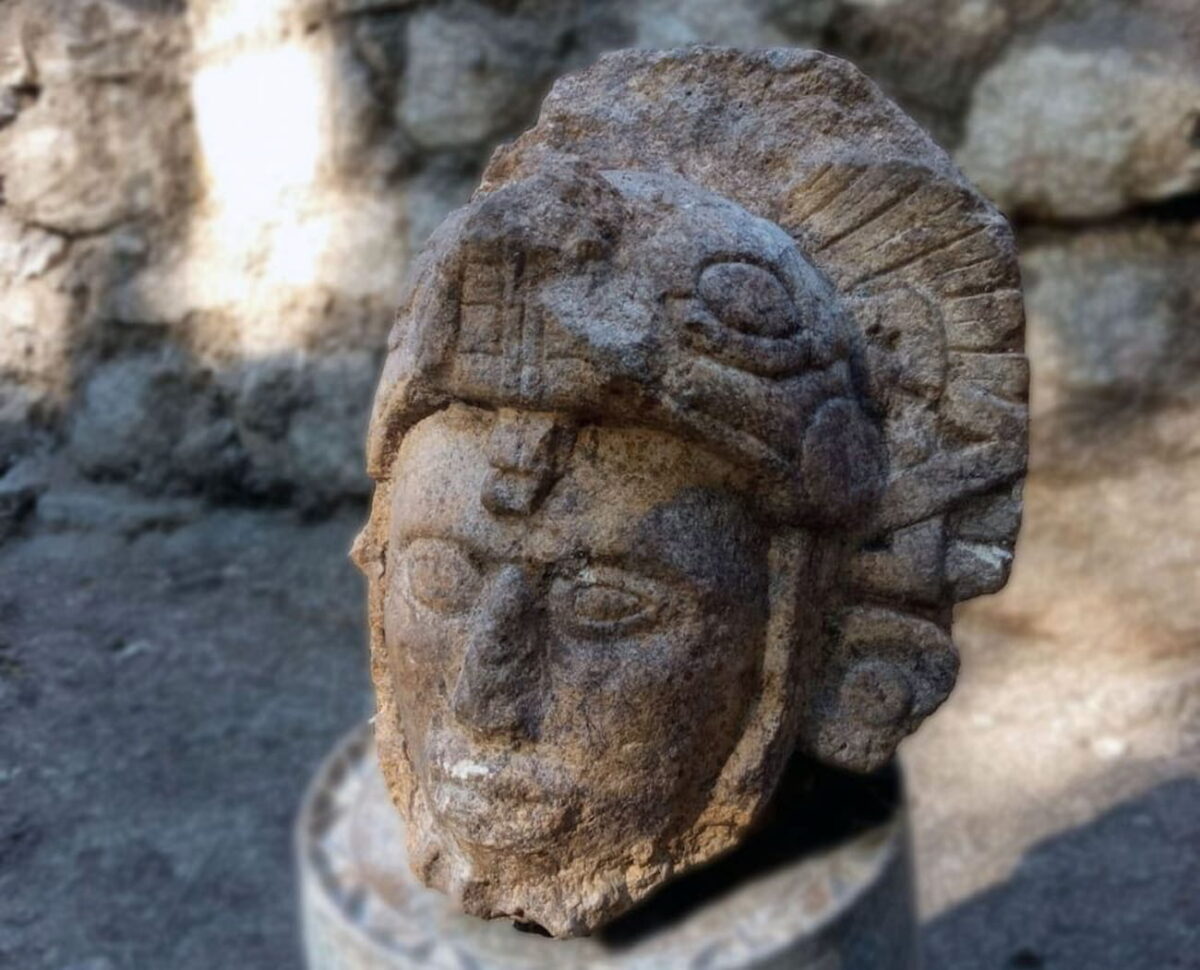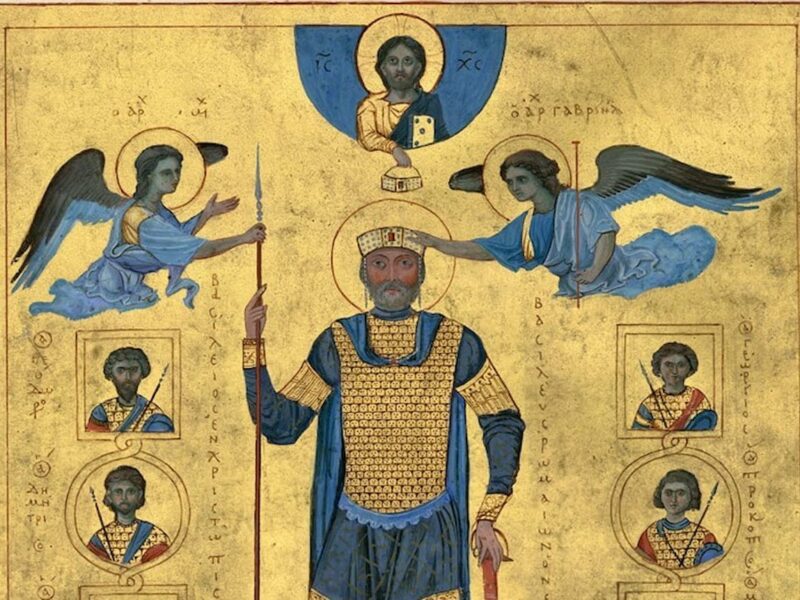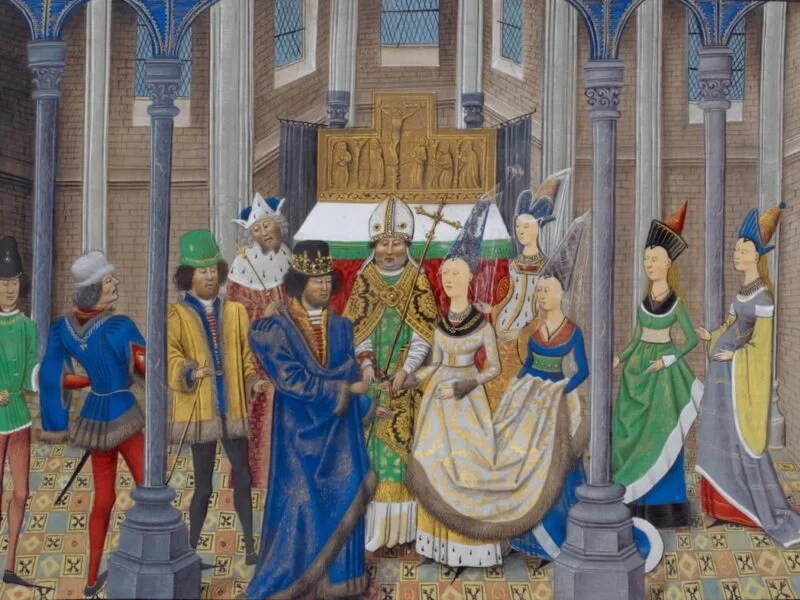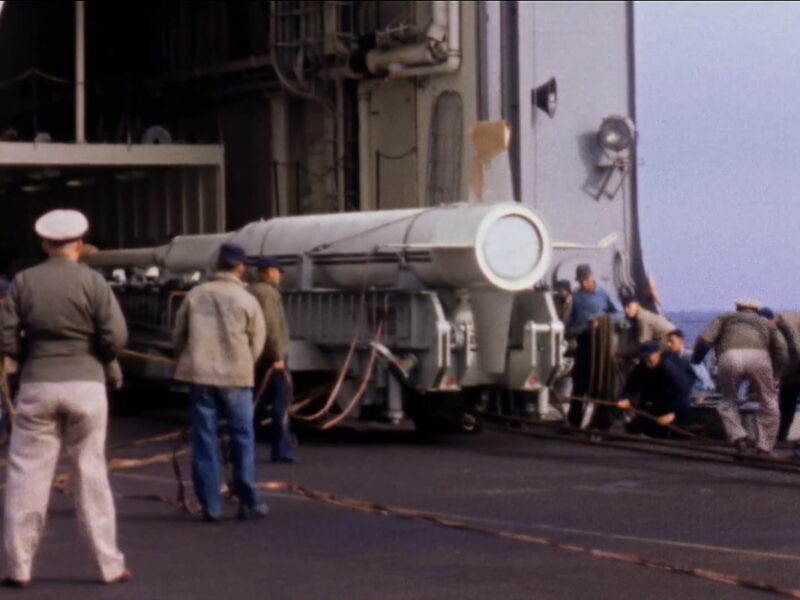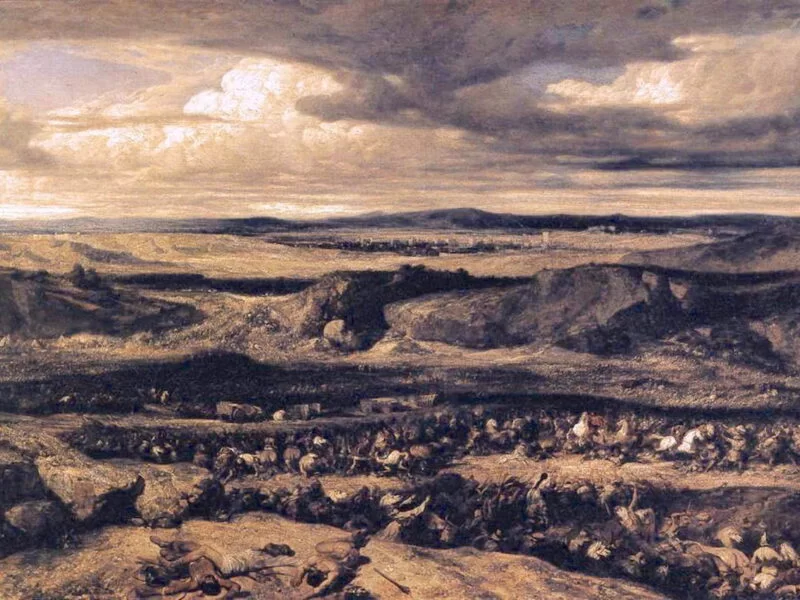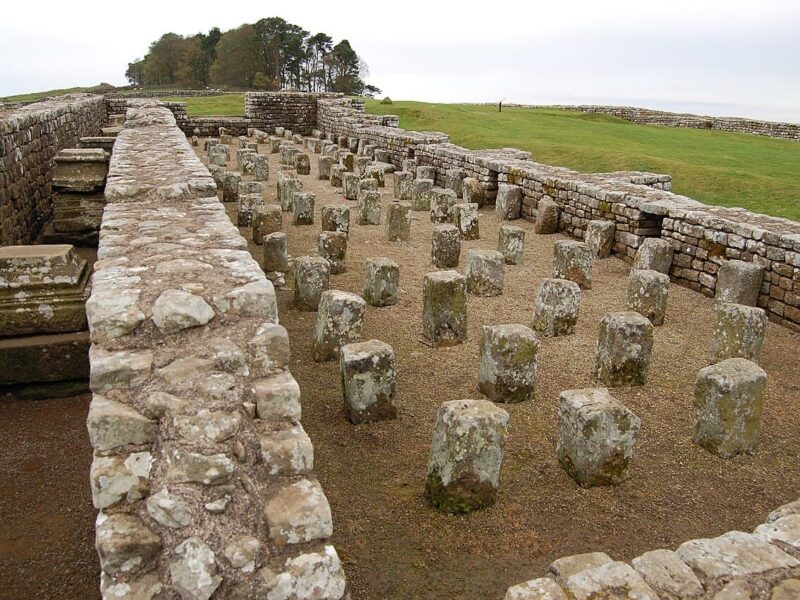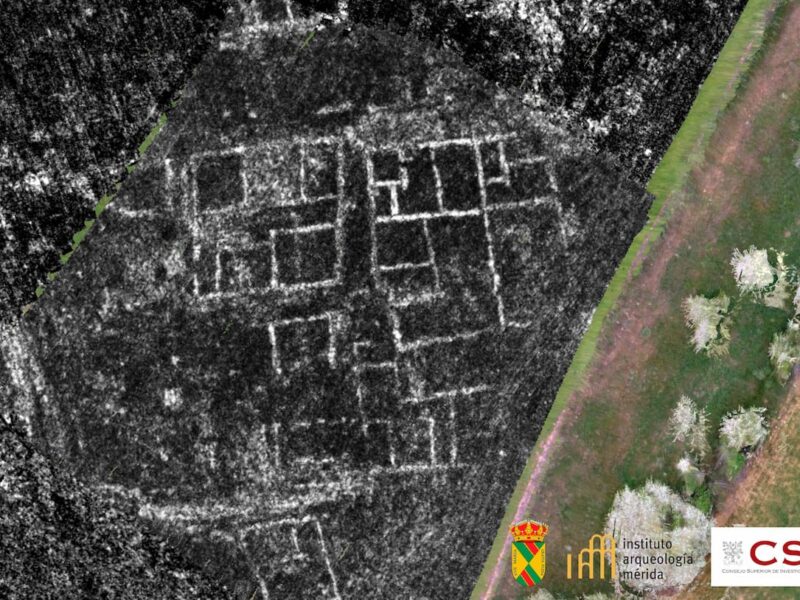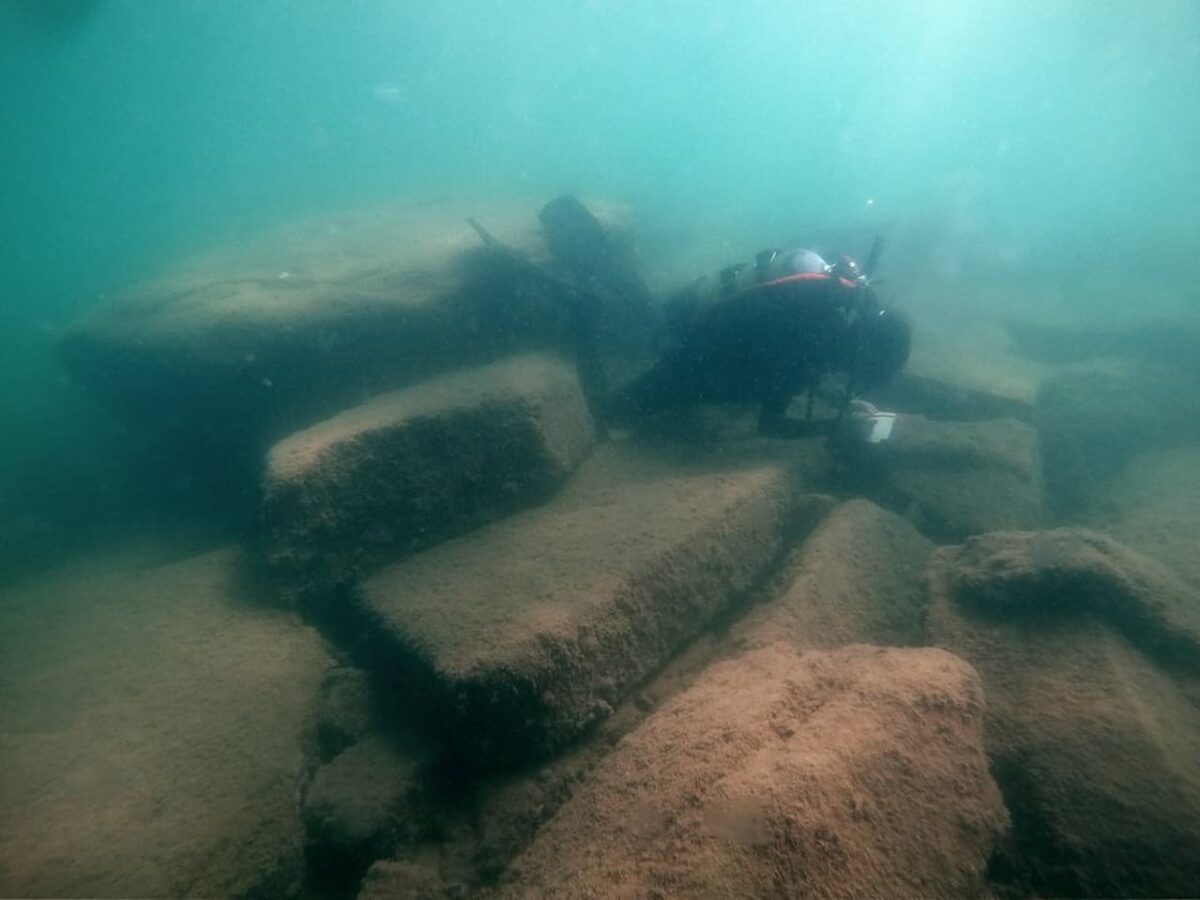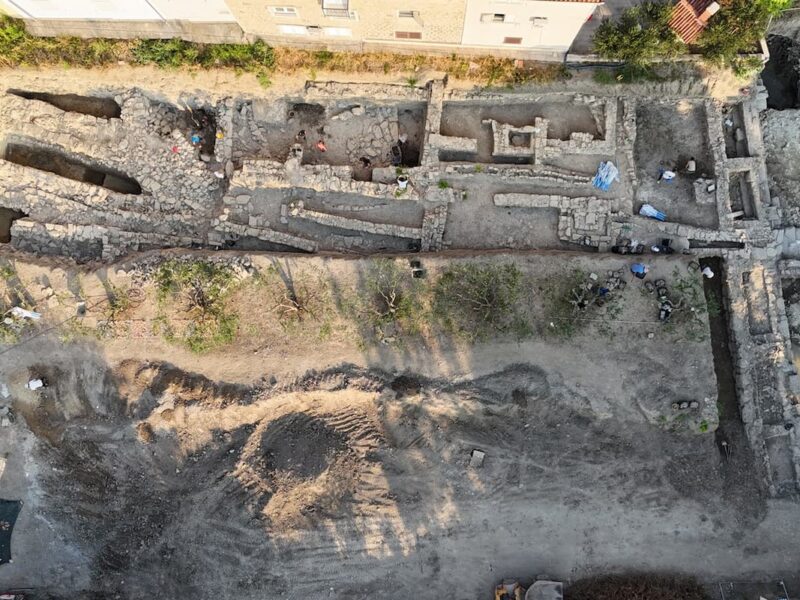Archaeologists working at the Maya archaeological site of Chichén Itzá in Yucatán, Mexico, have made an exciting new discovery. During ongoing excavations funded by Mexico’s Archaeological Zones Improvement Program (Promeza), the sculpted face of a warrior emerged among the ruins of Structure 3C11 in the area known as Temple 6 of Maudslay.
The partially preserved sculptural remnant was found within the construction fill on the east side of the platform. Measuring 33 cm in height, 28 cm in width, and 22 cm in depth, it is believed to have originally been part of a larger sculptural design. Despite some fractures, it is well-preserved and provides clues about the artistic styles of Chichén Itzá’s early periods.
The sculpted face represents a warrior adorned with a feathered headdress and a helmet shaped like a serpent’s mouth, indicative of a high social status or military rank. Diego Prieto Hernández, Director General of Mexico’s National Institute of Anthropology and History (INAH), presented details of the discovery as part of ongoing reports on archaeological work related to the Tren Maya project.
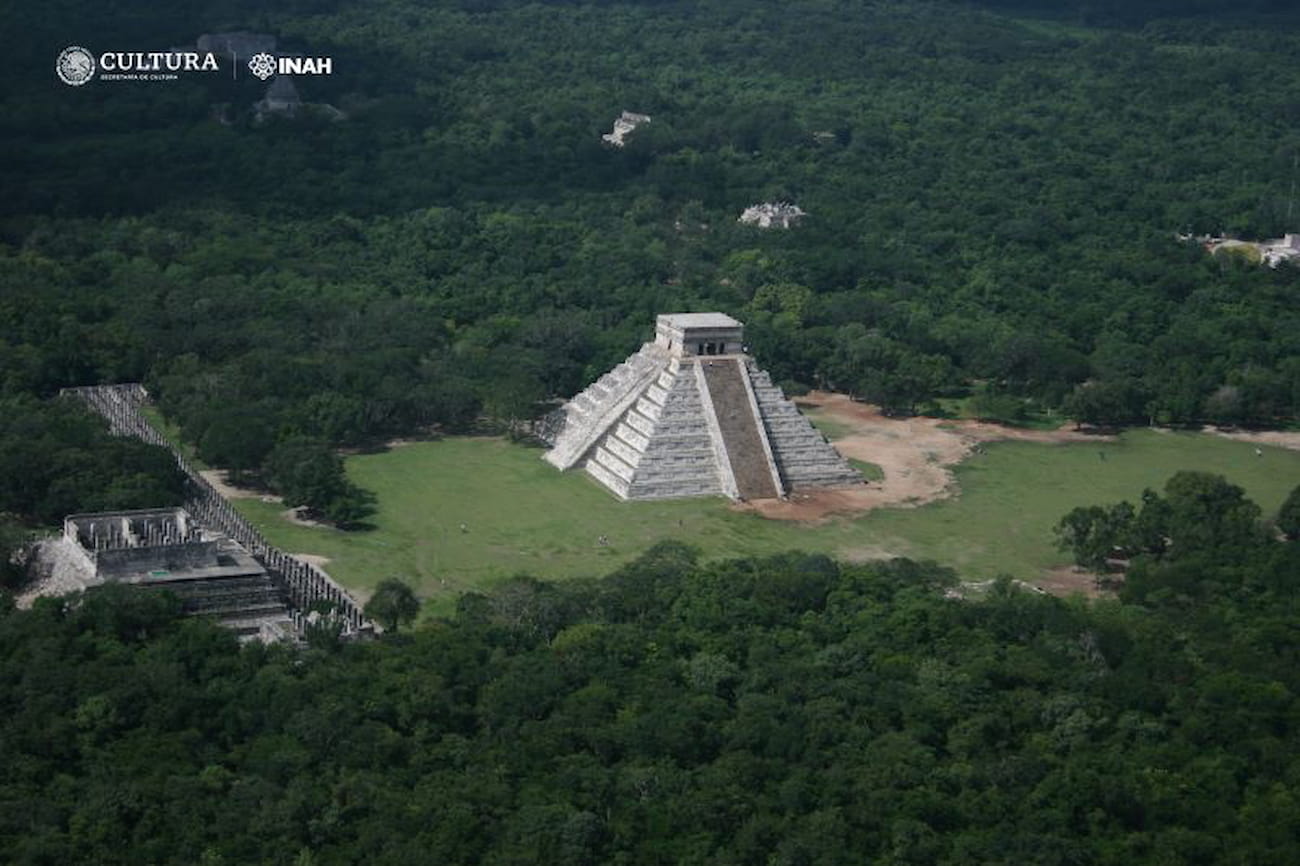
Ongoing excavations at Chichén Itzá, led by the site’s archaeological project, have shed new light on this significant Maya city that flourished between the 6th and 12th centuries AD.
As a prominent cultural and ceremonial center, Chichén Itzá demonstrates the advancements and influences between highland and lowland Maya societies over time. Architectural and artistic styles at the site reflect these interactions and periods of growth and decline.
Discoveries like the recently unearthed facial sculpture enhance our understanding of the early development of Chichén Itzá. They also underscore the value of continuous archaeological research, preservation efforts, and cultural programs such as Promeza.
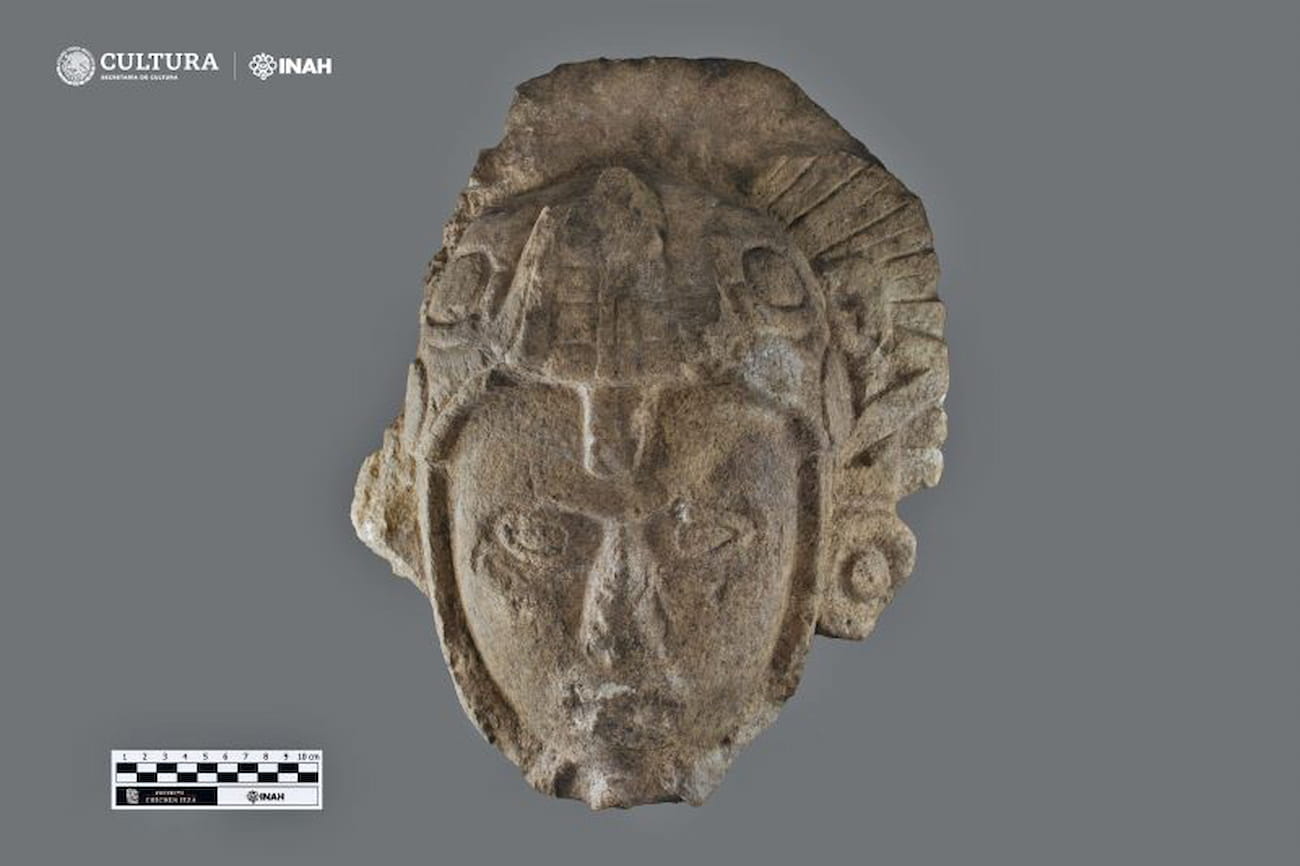
Through Promeza funds, INAH is enhancing infrastructure and visitor services at 27 archaeological sites along the proposed route for the Tren Maya. This includes 10 new visitor centers, eight updated museums, and conservation work that promotes cultural tourism in the region.
Specifically at Chichén Itzá, Promeza support will facilitate the construction of a large on-site museum. Thus, the discovery of the sculpted face takes on particular significance, providing a tangible example of the rich cultural heritage that Promeza aims to protect and share with new generations of Maya descendants and visitors from around the world.
As excavations at Chichén Itzá and other important sites continue, more pieces of ancient Mexican Maya history are expected to emerge.
Sources
Instituto Nacional de Antropología e Historia (INAH) of México
Discover more from LBV Magazine English Edition
Subscribe to get the latest posts sent to your email.

